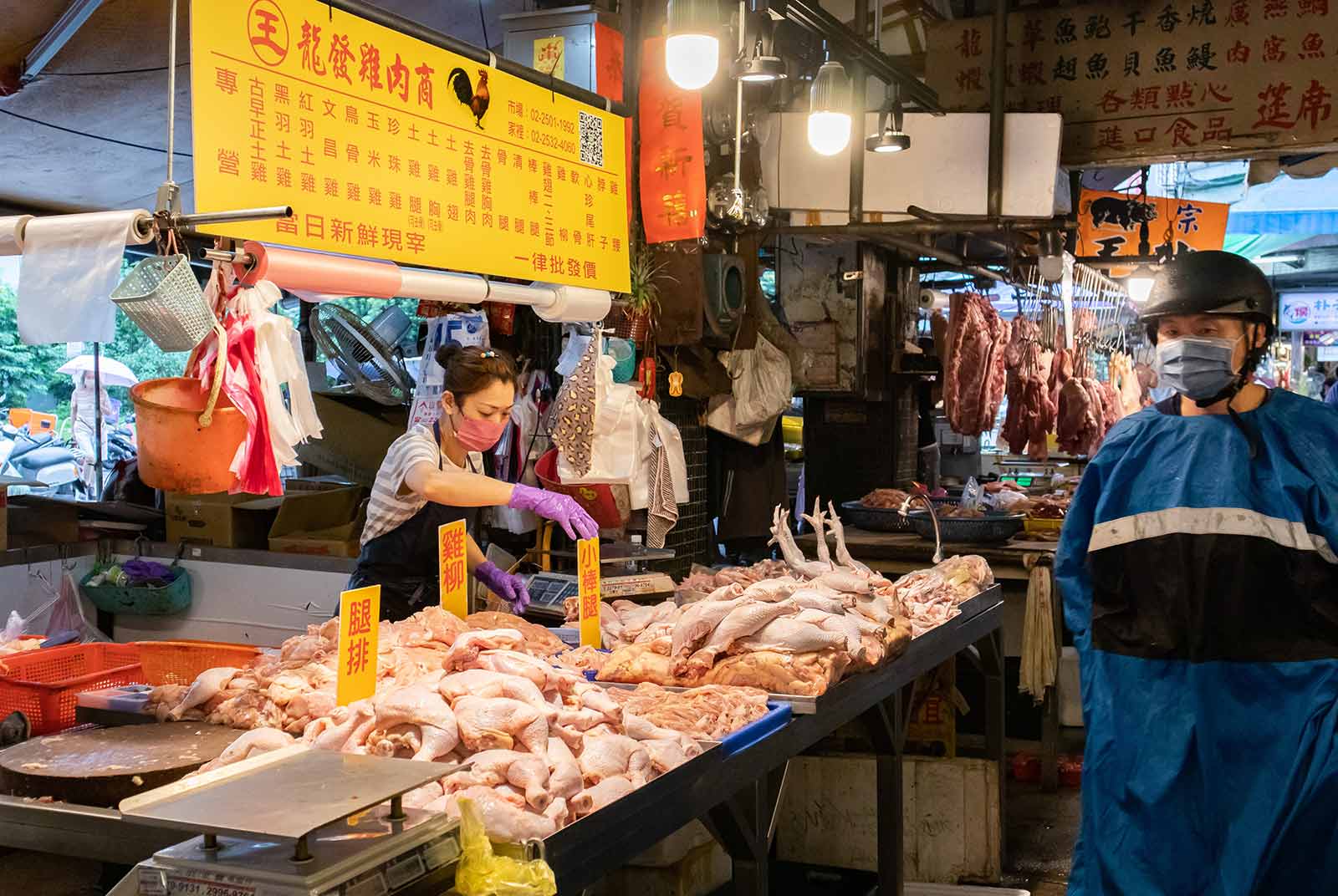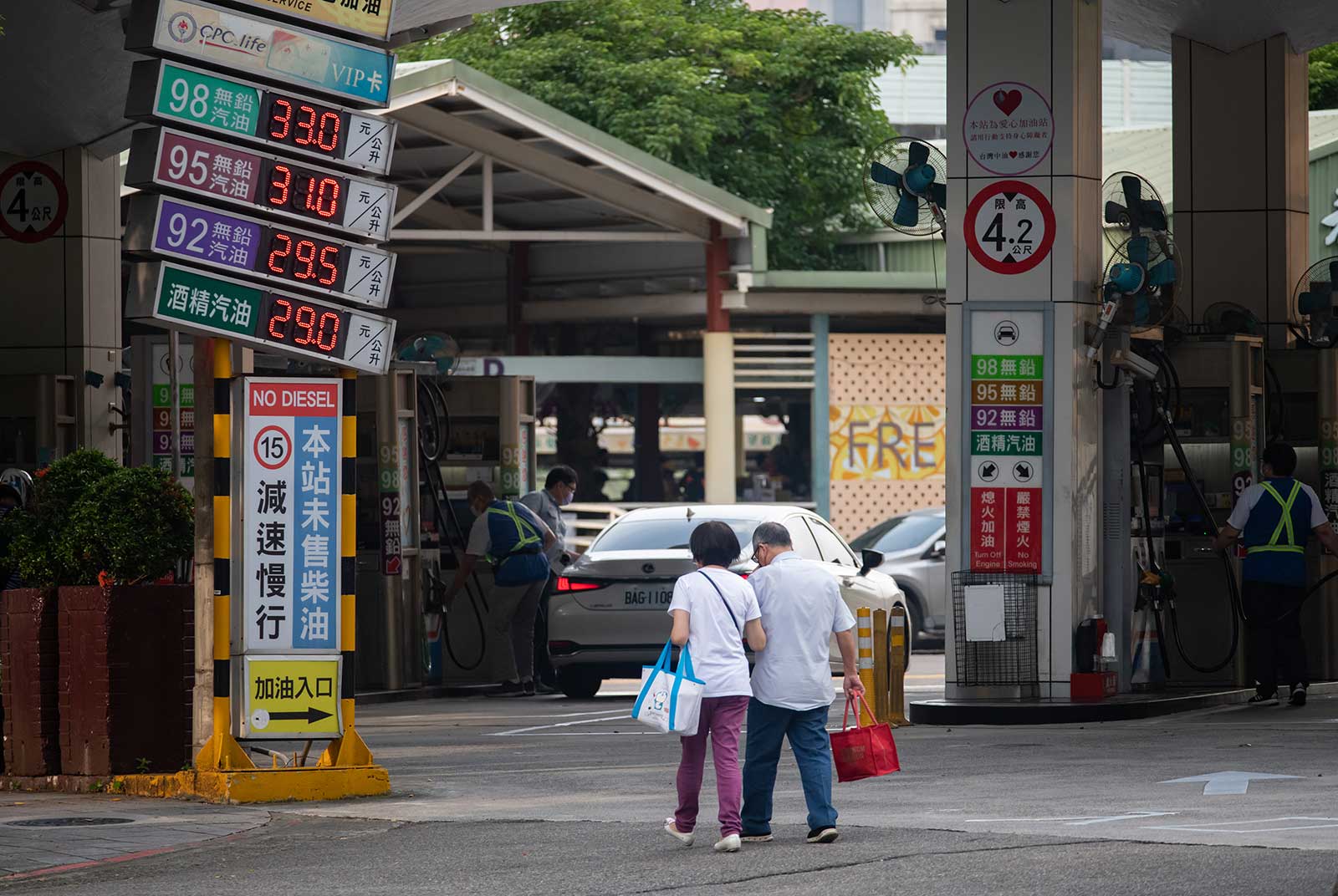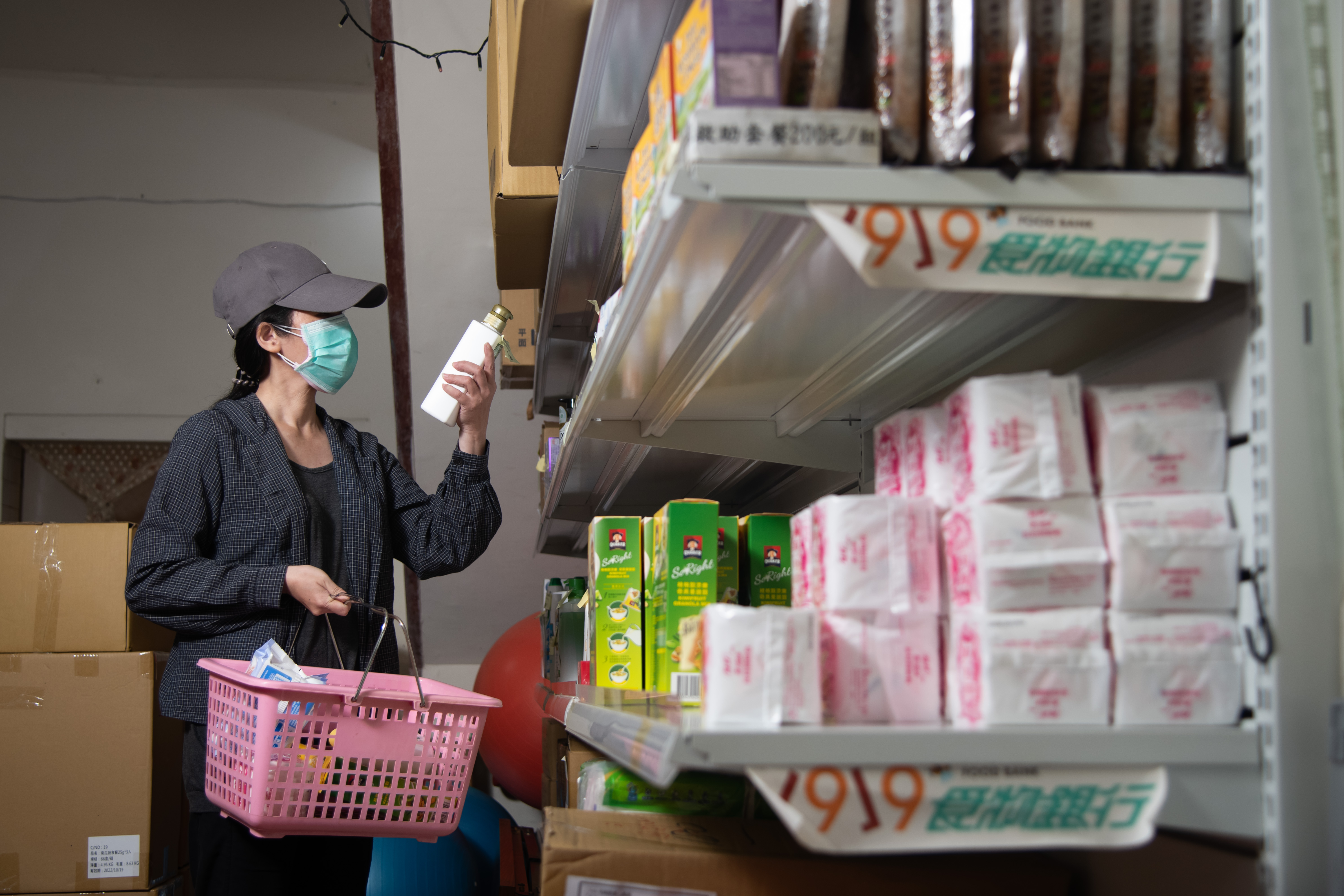Is Taiwan headed for full-fledged inflation?

Source:Ming-Tang Huang
Inflation is out of control around the world, while in Taiwan inflationary pressure seems moderate. This picture is deceptive, however, as the gap between the rich and the poor widens. How long will the hard times last?
Views
Is Taiwan headed for full-fledged inflation?
By Peihua LuFrom CommonWealth Magazine (vol. 751 )
A massive wave of inflation is sweeping across the globe. The U.S. Federal Reserve earlier this month raised its benchmark interest rates by 0.75 percentage points, hoping to stem the worst bout of price increases in four decades.
As the COVID-19 pandemic spread during the past few years, governments around the world handed out a great deal of money. But now the era of “easy” money has come to an end.
Middle-class salary incomes are shrinking
 Pork stands at an 87-month high (Source: Ming-Tang Huang)
Pork stands at an 87-month high (Source: Ming-Tang Huang)
Keeping in step with the US, the consumer price index (CPI) in Taiwan has risen more than three percent for three months in a row. Year-on-year, the CPI rose 7.22 percent in May. Prices for basic food items are skyrocketing to rarely seen levels. Eggs have hit a 41-month high, pork stands at an 87-month high and, with a 125-month high, flour is more expensive than ever in the past decade.
Taiwan’s CPI has been rising at an annual average of more than two percent for the past ten months, which is an inflation warning sign not seen in 14 years. The last time Taiwan faced similar inflationary pressure, following 14 consecutive months with an inflation rate above two percent, was during the financial crisis of 2007/2008. “Taiwan is now coping with the ramifications of the evil seeds we planted during the financial crisis,” notes Hsu Wen-tai, research fellow with the Institute of Economics at Academia Sinica.
After the financial crisis, Taiwan followed in the footsteps of the United States, lowering interest rates, which flooded the market with cheap money. Had the money been used to purchase goods and services, it would have triggered inflation early on. However, the hot money went instead into the real estate market and the stock market, boosting property and stock prices while also creating other underlying concerns.
Now the pandemic and the war in Ukraine have disrupted supply chains, pushing up commodity prices. And as people anticipate further price hikes, hot money is being pulled out of the real estate and stock markets and redirected into the consumer market. “Everyone worries that if they don’t buy now, things will be more expensive later,” says Hsu in explaining the changing consumer mindset. People go on buying sprees in expectation of inflation which in return leads to rising prices, constituting a vicious cycle.
In June, Taiwan’s central bank adjusted the annual percent change in CPI upward from 2.37 percent to 2.83 percent.
If we look at salaries including year-end bonuses and incentives, the manufacturing industry and the service industry offer quite a different picture. In the service industry, which employs more people than any other sector, salary raises that occurred since last June have been eclipsed by rising commodity prices.
Inflation in Taiwan not serious?
An official with the Directorate General of Budget, Accounting, and Statistics (DGBAS) holds that pressure to hike prices is high this year, but that inflation in Taiwan is moderate in comparison to other countries. But is this truly the case?
Taiwan is actually currently falling into a trap. What has kept inflation at a seemingly moderate level thus far is a government that exerts tight controls.
Lin Thung-hong, research fellow with the Institute of Sociology at Academia Sinica, relays the comment by a visiting finance expert from South Korea. The biggest difference between Taiwan and South Korea is that the Taiwanese government controls water, electricity, and gas prices. As a result, the inflation rate in Taiwan is much lower than in South Korea.
 The gas price rise as well as other resources' price spike. (source: Ming-Tang Huang)
The gas price rise as well as other resources' price spike. (source: Ming-Tang Huang)
Taiwan has formulas for gas and electricity prices that aim to reflect global energy costs. But the government nonetheless keeps interfering with market prices.
Taking electricity prices as an example, the price of electricity was frozen for four years starting in 2018. During the same period, Asian liquefied natural gas (LNG) prices increased 2.6-fold. The downside is that state-run enterprises absorb these costs, which have to then be subsidized eventually by the government.
The subsidies, for their part, are financed from taxpayers’ money. As Hsu puts it, “It means taking money out of the pockets of the salaried class to subsidize large enterprises.”
Further cause for concern is continuously rising global energy prices as countries around the globe strive to cut greenhouse gas emissions by switching to non-fossil fuels. Against this backdrop, state-owned enterprises are sure to see their losses widen, and the government will face even greater pressure to subsidize energy costs. The day will come when prices must reflect actual costs. But if utility and oil prices are increased to cover costs in one go, the average consumer will be hit hard.
Taiwan’s commodity prices are also underestimated, since official statistics do not reflect the actual increase in rents.
According to a study by Lee Tsu-fu, a master student at the Department of Economics of National Taiwan University (NTU), DBGAS statistics show just a 9.2 percent increase of the CPI for rent in the 14-year-period from 2008 to 2021.
Lee compared this data to more than a million transaction records from Taiwan’s home rental platform rent.591.com.tw from the same period. He found that the CPI for rent has in fact risen 59.8 percent, more than six times the DGBAS figure.
Another study, commissioned by the Ministry of the Interior, found that rents in Taichung, Taiwan’s second-largest city, have risen 13.7 percent over the past three years, more than any other large city. Kaohsiung registered a 12.6 percent rise in rental prices, followed by New Taipei City with 9.7 percent, Tainan with 6.2 percent, Taipei with 5.6 percent and Taoyuan with 4.3 percent.
In contrast, the DGBAS rent index increased just three percent during the past three years.
As Lee points out in his research, the sharp discrepancy between the DBGAS rent survey and actual market rents can be attributed to the data-gathering approach. More than 90 percent of the 15,000 rented homes covered by the survey are located in social housing projects, which explains why the CPI for rent does not reflect reality.
Food prices soar fastest
People with middle- or lower-level incomes are struggling even more to make ends meet. “Inflation inequality” is therefore drawing increased attention in academic research. It means that the lower the income, the harder inflation hits, because low-income households need to spend a higher share of their income on daily necessities than more affluent people.
 Low income households spend more percentage of their income on daily necessities. (Source: Ming-Tang Huang)
Low income households spend more percentage of their income on daily necessities. (Source: Ming-Tang Huang)
Inflation inequality also exists in Taiwan.
The DBGAS divides households based on income ranges into bottom (20 percent), middle (60 percent) and top (20 percent). The poorest people spend 60 percent of their available income on grocery bills and housing costs, whereas richer people spend only around 40 percent of their available income on food and housing.
This means that poorer people feel the effects of inflation much more than those who are better off.
Grace Cheng, deputy secretary general of the Chinese Christian Relief Association, confirms that seemingly small price hikes can become huge burdens. “For economically disadvantaged families, eggs are the most affordable healthy food, but prices have risen almost 30 percent. While the average consumer thinks this is no big deal, it is a big problem for poorer people,” she says.
Hit by the double whammy of pandemic and rising prices, people who have already been struggling with poverty on the margins of society feel that their very survival is at stake.
 The pension-relying elderly face a more difficult future as inflationary spikes. (Source: Ming-Tang Huang)
The pension-relying elderly face a more difficult future as inflationary spikes. (Source: Ming-Tang Huang)
During the past two years, the government was forced to resort to relief packages to effectively alleviate the financial distress resulting from pandemic-related job losses and small business closures. But now government coffers are depleted just as soaring prices and rents are quickly emptying out the pockets of low-income earners.
Research shows that while economically hard times affect everyone, disadvantaged groups need much more time than rich people to recover from such downturns.
The low prices are gone
Government officials and economic pundits hold that there is no risk of stagflation in Taiwan since the economy is still projected to grow by 3.91 percent this year. They argue that the economic outlook remains good since Taiwan benefits from the restructuring of global supply chains and geopolitical realignment in the region.
Yet, in the long run, Taiwan will not be able to return to the cheap prices that made life here so affordable for the vast majority. The war between Russia and Ukraine will keep prices for most products high for a long time to come. The IMF expects the average annual increase of the global CPI to remain above pre-pandemic levels for two or three years.
Wang Hung-jen, professor at the Department of Economics of NTU, points out that inflation is sure to hit Taiwan because the structure of the global economy differs from the past as central banks adopt quantitative easing, supply chains are restructured, and the geopolitical landscape is changing. But just how bad inflation might become “is hard to predict,” says Wang.
What cannot be denied is that production costs will increase. As China’s role as the world’s factory weakens, countries around the globe will relocate overseas production of key commodities back home to reduce their dependence on imports. On top of higher costs for domestic production, there is too much hot money in the market, which will further push up commodity prices. “In the future, commodity prices will easily go up during economic boom times. But if costs continue to rise during economic downturns, then we will see stagflation,” warns Wang.
Lin also expects trouble on the salary front. Originally, salary incomes improved between 2017 and 2020, benefitting from the repatriation of large investments from China to Taiwan. Given that this trend has peaked, he fears that “should we see another global recession, rising inflation, combined with stagnating wages, we will be in bigger trouble.”
Looming debt crisis
A new debt crisis is brewing.
Lee Shih-chia has made a living for the past 40 years running a small tourism bus business. Registered in his name are two coaches, including one he ordered in 2019 as he prepared to hand the business over to his son. When the pandemic hit, bringing tourism to a standstill, Lee’s son began to drive a truck instead. Meanwhile Lee’s new coach has been sitting idle, losing more than NT$2 million in value. On top of depreciation, Lee has had to shoulder costs for rented parking space, tax, and insurance.
He says the scary thing is that in the tourism bus business, around 80 percent of vehicles are financed with car loans. “With NT$500,000 in your hands, you can go buy a vehicle with a price tag of NT$8 million.”
Wu Chung-shen, associate professor at the Department of Sociology of Fu Jen Catholic University, has researched private household debt for many years. He points out that, a year ago, Taiwan fought the pandemic quite successfully. And since the government’s relief measures achieved the desired results, the pandemic did not cause as much debt and poverty as the SARS crisis in 2003. But he says recent developments make him worry.
A new type of consumer loan is appearing in the market, targeting the most financially vulnerable groups.
Since last year, victims have been seeking help from self-help groups for so-called credit card slaves, people who cannot afford to pay off their credit card debt. Unable to make ends meet, and lacking credit for getting a traditional personal loan, cash-strapped people borrow money from car loan companies, using their cars as collateral.
If the borrower defaults on the secured loan, the car loan company can take possession of the vehicle and sell it. If the proceeds from the car sale do not cover the owed debt, borrowers still have to make payments out of their own pockets. In the end, the borrower is deeper in debt than before taking out the loan.
As this consumer debt crisis brews, the specter of inflation looms large over our heads.
Have you read?
- Paradise lost? How Taiwanese crypto businesses are fighting the bear
- Meet Taiwan’s “Phygital” Mavericks
- Taiwan’s new Web3 upstarts
Translated by
Susanne Ganz
Edited by TC Lin
Uploaded by Ian Huang






